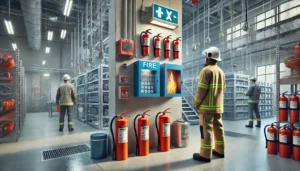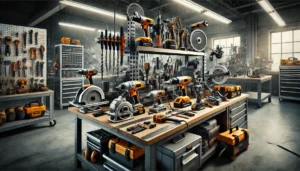The quality of fasteners in use impacts the construction and engineering structures and their durability over time. A good fastener such as bolts, screws, or rivets are called high quality fasteners and they serve an important purpose of fastening different parts of a structure to make it safer and stabler. Using high quality fasteners will improve the internal strength and enhance the durability created over time making it safer and more affordable to build structures.
Material Strength and Durability
Very high quality fasteners are designed and made from high strength materials that are durable. High end steel alloys, stainless steel, and titanium are the most common materials used to make fasteners. All materials are selected on the basis of their properties. These materials serve a different function and offer excellent tensile and shear strength, fasteners are likely to be used under substantial load conditions and with constant use. On the contrary, low quality fasteners are made from low grade materials which wear out faster and are corrodible and breakable under high stress which leads to poor structural performance of the assembly as a whole.
Corrosion Resistance
One of the major problems in building design is corrosion that happens in high moisture, chemical, or temperature environments. Protective coatings or materials that make fasteners corrosion resistant such as galvanized steel or stainless steel are often used. These materials aid in preventing the breakdown of rust and corrosion, ensuring the structural stability is maintained. Overall fasteners of low quality that can corrode through rust are problematic, as they pose safety risks and need repairs quite early.
Precision Manufacturing and Consistency
Good quality fasteners are manufactured through a process of threading, uniform dimensions, and adequate heat treatment, all coming under strict supervision. Their performance directly correlates with how well the aforementioned factors are managed, therefore the manufacturing stage must have sufficient room to decrease error rates. For example, precise manufacturing of fasteners ensures no structural joints fail due to imbalanced load distribution. On the other end of the spectrum, poorly made fasteners, unreliable ones, and misaligned ones all have the potential to greatly damage precise balancing structures.
Loading Capacity
Structures endure static, dynamic and environmental loads that change depending on numerous factors. High-strength tensile bolts and nuts are designed for the loads because their clamping strength is sufficient to hold the components of the structure. Bolts and nuts are made to withstand stresses higher than what is anticipated in the work, thereby ensuring that joints are effective and the structure is stable. Bad fasteners may not have proper tensile strength and, as a result, may fail due to joint separation on load.
Straining Resistance
Fatigue straining resistance is important in structures that undergo cyclic loading like bridges and other machinery. High grade bolts and nuts are made to resist fatigue and to, consequently, fatigue failure by crack initiation and propagation. Proper material, heat treatment as well as the correct way of fabricating the structures are responsible for reducing the straining damaging factors. Bad bolts and nuts may not withstand fatigue to a great extent and may fail due to repeated loading cycles.
Safety and Compliance
Strong electromagnetic locks and the right fasteners should also be used to ensure the relevant standards and building regulations are adhered to. These regulations are in place to ensure that there are no safety or performance concerns. These standards govern the mechanical attributes, size, and testing of construction fasteners. Compliance with these rules lowers the chances of structural deficiencies and accidents. Poor quality fasteners can be at risk of not conforming to these regulations and thus pose a safety concern and even a potential for liability.
Cost-Effectiveness Over Time
There may be stricter costs associated with high quality fasteners but their cost effectiveness and value for money is realized with the passage of time. Their life expectancy, coupled with minimal changeable features due to weather conditions translates into reduced maintenance and replacement costs over time. Moreover, the use of good quality fasteners also lower the chances of structural damages which can lead to expensive repairs and loss in productive time. Good quality fasteners should be used under all circumstances as this is the best way one can protect the value of the structure.
Conclusion
Choosing the right fasteners is one of the most essential things in construction as it contributes to the structures’ integrity. Quality fasteners provide the required strength, durability, and resist environmental forces which allow for the structure to be safe throughout their intended use period. Time and money describes perfectly the durable cost effective structures engineers and builders have achieved through the use of quality fasteners.










